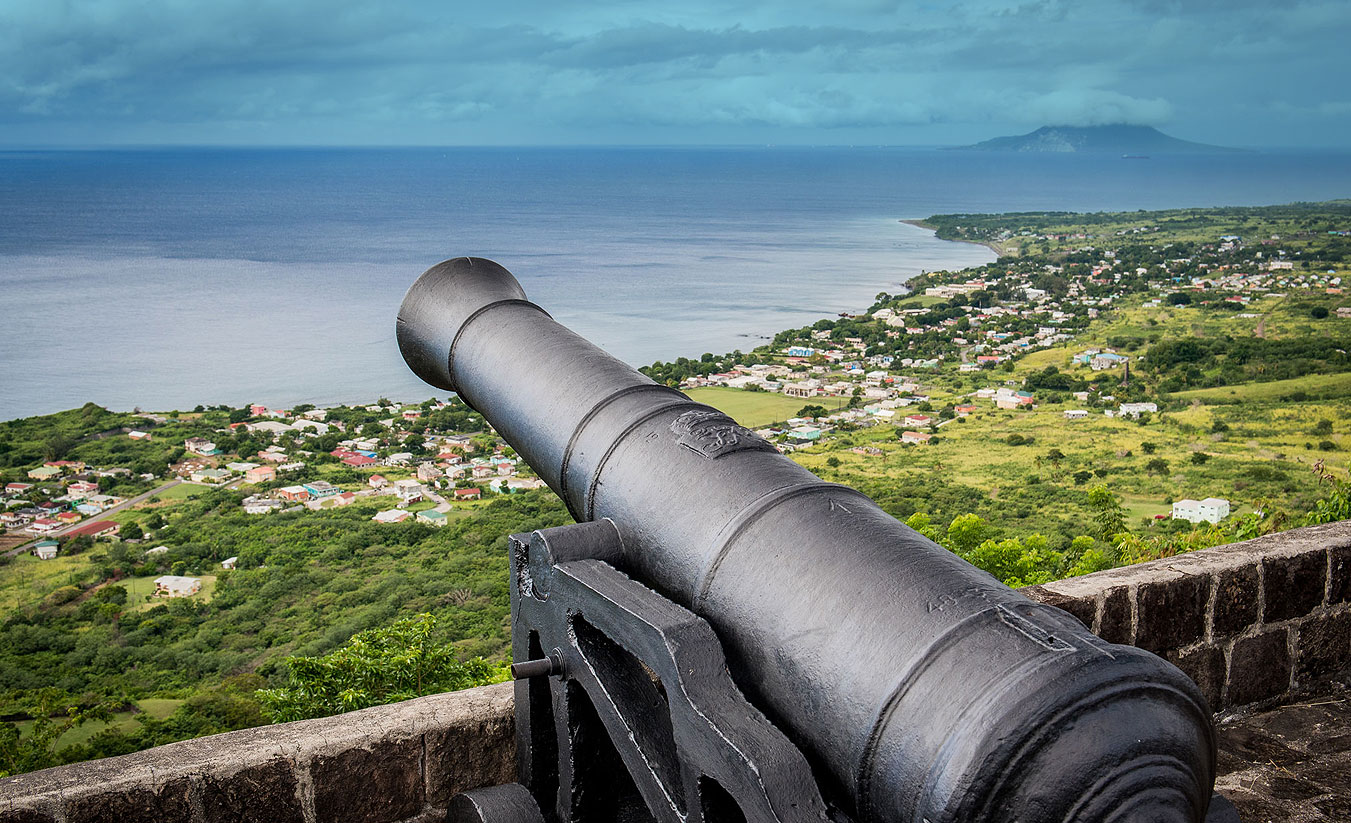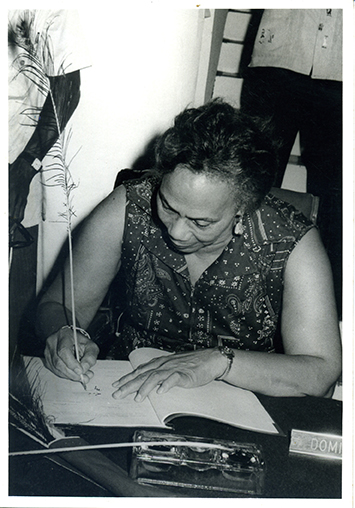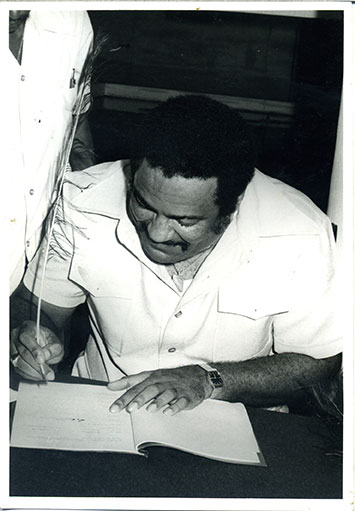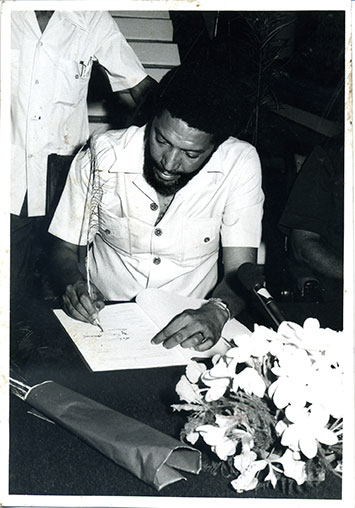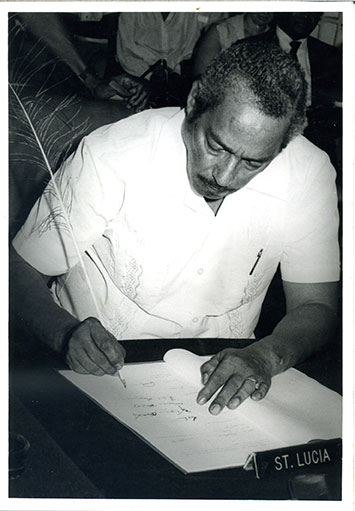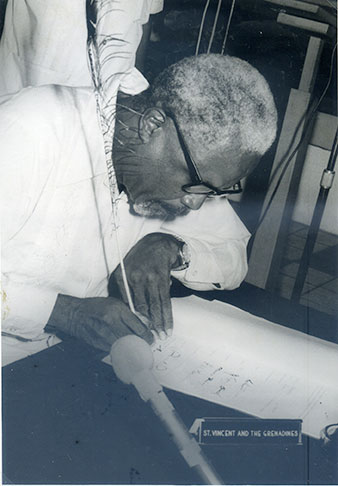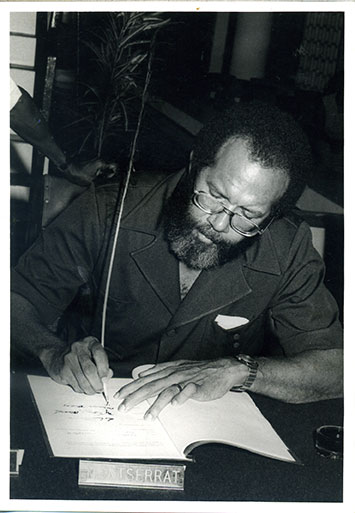St. Kitts Music Festival - end of June
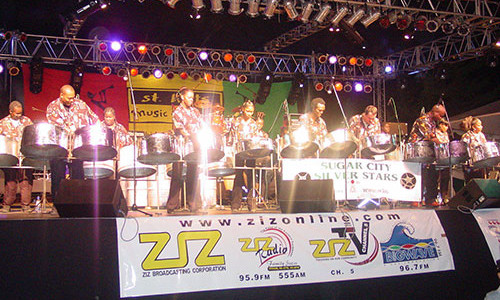
The St. Kitts Music Festival takes place every year at the end of June. It was the brain child of then Minister of Tourism and Culture, G A Dwyer Astaphan who wanted to create an event that would attract visitors to St. Kitts in the off season and to expose the creative elements on the island, and the general public to the different genres of music. The festival’s website sets out its objectives as follows:
to increase visitor arrivals; improve hotel occupancies; stimulate greater economic activity across all commercial sectors; create greater international awareness for the destination as a viable option for visitors; while also producing a world class entertainment event attractive and appealing to Kittitians/Nevisians and tourists.
But there were two other objectives. The organizers were determined to use the festival as a platform to roll out Kittitian talent and to also expose local performers to visiting artistes, promoters and tourists.
The first festival took place in 1996 on the grounds of the Fort Thomas Hotel. Rosie Cameron designed the t-shirt that was to be a promotional item. The design was immediately adapted to become the logo of the festival.
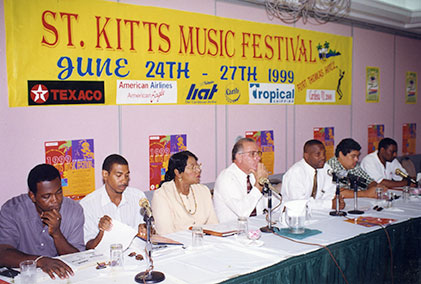
Statehood 28th February 1967
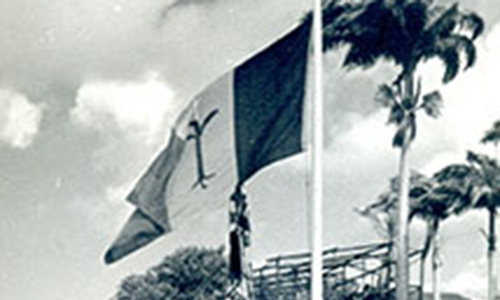
The West Indies Federation was an experiment in unity for the English Speaking Caribbean and should have resulted in an independent West Indian nation.. After long discussions it came into being in 1958. Elections took place that year but Jamaica and Trinidad did not join the new political unit with the same commitment as the other islands. Economic prosperity meant that these two islands did not feel the need to be part of a larger grouping to achieve independence. The fact that the Federation did not have a source of funds for its own use also damaged its longevity.
The end came in 1962, barely four years after it had been launched. The idea of Federation was not abandoned by the smaller islands. A Little Eight grouping with Barbados was discussed, but when that island chose to seek independence on its own, Grenada soon followed and the remainder attempted a smaller union which eventually emerged as the OECS.
For those that needed more preparation to move towards independence, the concept of Associated State with Great Britain was created. St. Kitts-Nevis-Anguilla was the first to take the new status. Under this constitution the State of St. Christopher, Nevis and Anguilla had the authority to make decisions on internal affairs while Britain retained responsibility for external affairs. The Premier now presided over Cabinet meetings and the Cabinet was collectively responsible for the actions of individual ministers in the execution of his/her work. The new state was responsible for all internal matters. That same year Anguilla chose a different destiny.
Disasters in Basseterre
Hurricanes
Wars were not the only dramatic events to effect the development of Basseterre. Natural disasters played a very significant roll.The 1642 and 1667 hurricanes destroyed all the houses on the island. In 1667 French Governor Laurent reported I hold myself obliged to inform you that this island is in the most deplorable state that can be imagined and that the inhabitants could not have suffered a greater loss, or been more unfortunate except they had been taken by the English. There is not a house or sugar works standing, and they cannot hope to make any sugar for fifteen months to come. As for the manioc, which is the bread of the country, there is not one left, and they are more than a year in growing … I assure you that if peace is not made, or men-of-war sent to this country to facilitate the bringing of cassava from the other islands, that the inhabitants and troops will die of famine. (Southey, Chronological History of the West Indies Vol.2 p. 78)
It was estimated that the hurricane of 31st August 1772 caused £500 000 worth of damage on St. Kitts.
Other destructive hurricanes occurred on the 9th September 1821, the 17th August 1827, 12 August 1835, 21st August 1871, 12 September 1876, 7 August 1899, 28 August 1924, 13 Sept 1928, 17 September 1989 (Hugo) , 5 Sept 1995 (Luis), 15 Sept 1995 (Marilyn), 21 September 1998 (Georges), and 18 November 1999 (Lenny). A listing of storms that passed over the island between 1851 and 2008 was produced by the Caribbean Hurricane Network and can be found at http://stormcarib.com/climatology/TKPK_all_isl.htm
Earthquakes
On the 6th of April 1690 an earthquake caused serious damage throughout St. Kitts. An eye witness account of this earthquake can be found at http://www.uwiseismic.com/Downloads/EqEC_1690_document.pdf
In 1974 an earthquake of magnitude 7.5 struck the Leeward Islands causing significant damage.
The University of the West Indies, Seismic Research Centre published a listing of the major earthquakes of the Eastern Caribbean at http://www.uwiseismic.com/General.aspx?id=16
Floods
Major flooding continues to torment the inhabitants of Basseterre. Residents of College Street and Westbourne Ghaut become very cautious when rain fall shows no sign of letting up. Significant floods seem to happen at least once in every century with the most damaging occurring in 1792, 1880, 1998.
Fire
Fires were a constant threat even in peacetime. On the 4th September 1776 a fire caused loss of property and it was followed only a day later by a hurricane. At the meeting of the St. Kitts Council of the 30th September 1776 approved a message of congratulations to George III on the birth of a daughter which also contained a description of the state of the town. The most considerable and most opulent part of Basseterre, the capital of our island, the seat of commerce and the magazine from whence the merchants supplied our plantations hath been destroyed with all the stores of provision in it by a dreadful and irrestible [sic] fire, so rapid and destructive in its progress that the security of life admitted of little attention to preservation of property. Scarcely had the afflicted inhabitants recovered from their consternation, when it pleased Divine providence to send an additional calamity, as violent in its operation and injurious in its consequence to the landed as the preceding one was to the commercial interest. A dreadful storm accompanied with astonishing torrents, unprecedented in the memory of the oldest resident amongst us, has destroyed large tracts of our land and swept away almost all the provision in our ground. By this heavy visitation a large number of Your Majesty’s commercial and other faithful subjects, before happy in the exercise of honest industry have lost their whole property and a town once the abode of content and affluence is not become the residence of poverty, desolation and ruin.
Samuel Augustus Mathew wrote that, in the days after the disaster, some people suspected that looting had been carried out slaves. In his book or an The Lying Hero, answer to J. B. Moreton’s Manners and Customs in the West Indies his description of the searches for stolen goods show a man who was in favour of slavery but more significantly it gives insights into what the enslaved considered important.
The great fire of 1867 left damage throughout Basseterre. It started on the late in the night of the 2nd July at a building off the eastern end of Reeve Alley since replaced by Central Street . It quickly spread to the Bay Road and as far west as Salt Pond Alley. Before the night was out the whole of Cayon Street, west to the police station had been destroyed. Many people were homeless and food was scarce as most businesses had lost significant inventory to the flames.
Although conflagrations like the one of 1867 have not taken place since, a number of localized blazes have claimed property in Basseterre since then. A fire destroyed the Losada business on Bank Street in 1968. The structure that housed it was never rebuilt and the TDC parking lot now stands in its place. The Court House was burnt to the ground in 1982 and rebuilt in 1995.
Treaty of Basseterre 18 June 1981
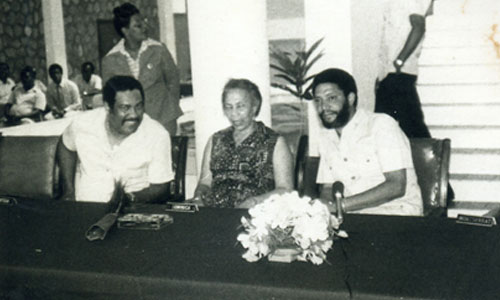
Historical Background
The idea of unification within the Caribbean region gained the interest of the British Colonial Office in the late nineteenth Century mostly as a colonial administrative device designed to cut the cost of managing the colonies with failing economies and a growing reliance on Britain.
The 20th century however saw a growing discontent with regards to the unrepresentative nature of the island governments. In 1914, T. Albert Marryshow of Grenada, founded the Representative Government Association in that island with the aim of gaining a measure of representation in the Legislative Council. Similar moves followed in the other islands. The St. Kitts Representative Government Association was formed on the 28th December 1918, by a small group of coloured middle class men holding positions in the professions and the business community. Its mission was the securing of popular representative government. By the following year, 330 men had joined the Association. Clement Malone was its President and W.A.H. Seaton held the post of Secretary. The Colonial Office sent the Wood Commission to report on the political situation in the region. The result was a modest increase in the numbers of elected representatives in some of the islands.
The years of economic depression inspired another attempt at a unified administration of the Leewards, the Windwards and Trinidad. In response an unofficial conference took place in Dominica in 1932. Thomas Manchester and W.A.H. Seaton of the newly formed Workers’ League represented St. Kitts. Middle-class West Indian representatives put together a scheme of federation in which representation was a key element.
However the depressed state of the sugar industry in the various territories took centre stage as strikes and work riots made headlines throughout the region only to be overshadowed by the outbreak of the Second World War. It was not till 1946, at the regional conference held in Montego Bay, Jamaica that a fresh initiative started laying the ground work for the creation of a political federation that would unite the various territories.
In 1958, the West Indies Federation came into being. It included Antigua and Barbuda, Barbados, Dominica, Grenada, Jamaica, Montserrat, St. Kitts-Nevis-Anguilla, St. Lucia, St. Vincent and The Grenadines, and Trinidad and Tobago. However with no revenue of its own and with the important regional issues still to be settled by conferences of Ministers, the Federation was off to a weak start. Its day to day operations were entrusted to Grantley Adams of Barbados as Prime Minister, Dr. C.G.D. La Corbiniere Deputy Prime Minister and Minister of Trade and Industry, Robert Bradshaw of St. Kitts as Minister of Finance and their comrades mostly “small islanders” as they were referred to by the bigger more prosperous islands. Neither Trinidad nor Jamaica transferred any of their political giants from local to federal politics and their withdrawal in 1962 brought the federation to an untimely end.
That same year the leaders of the Western Caribbean announced their intention of working together as a Federation of the eight remaining territories. Discussions started in London but it soon became clear that matters of finance were not going to be easily resolved. Barbados finally decided to seek independence on its own and achieved this in 1966.
The remaining islands assumed associated statehood that same year and the West Indies Associated States Council of Ministers (WISA) came into being. This new constitutional development gave the territories full internal \self-government while Britain remained responsible for defence and foreign affairs.
Two years later the Eastern Caribbean Common Market (ECCM) was established.
As the islands achieved impendence from Britain it became evident that there was a need for a more formal arrangement to assist with their efforts at development. In 1981 the Treaty of Basseterre was signed giving birth to the Organisation of Eastern Caribbean States (OECS). The treaty was signed by Antigua and Barbuda, the Commonwealth of Dominica, Grenada, Montserrat, St. Kitts and Nevis, St. Lucia, and St. Vincent and the Grenadines. Anguilla and the British Virgin Islands have since become associate members of the OECS.
Its purpose was to promote co-operation, unity and solidarity among member states, to assist member states in the realisation of international obligations, to achieve the fullest possible harmonisation of foreign policy and to promote economic integration among them.
The Event
On the 18th June 1981, Government Headquarters was the venue for the signing of the Treaty of Basseterre which created to OECS. For the members of the public who came to Church Street to witness the event it was a strange day. The ceremony was scheduled to start at 4.00 pm but the time was changed to 5.00 pm and even then, there was another delay. The Guard of Honour had fallen in on parade at 2.00 pm and so the soldiers were then marched off for a break.
The ceremony had been delayed because all the representatives were still attending the Council of Ministers’ conference of West Indies States Association (WISA) then taking place at the Fort Thomas Hotel. That too had started late and then the delegates became involved in controversial issues that were difficult to resolve. The Democrat of the 20th June 1981 stated that “up to the very day of the signing, there was still controversy and uncertainty surrounding the establishment of the sub-regional grouping.”
The ceremony finally took place in the lobby of Government Headquarters which had been specially decorated for the occasion. The event was covered live on ZIZ radio and recorded for television. It was witnessed by an eager and enthusiastic crowd who had come to Church Street not only for the occasion but also to catch a glimpse of Eugenia Charles of Dominica, the Caribbean’s first female Head of Government and of Maurice Bishop, the youthful and charismatic leader of Grenada’s Revolutionary Government.
The Revised Treaty of Basseterre, signed on 18 June 2010, established the OECS Economic Union. The OECS is governed by the Authority consisting of member states represented by their Head of Government. It is administered by a Central Secretariat located in Saint Lucia.
An Account of the Damage to St. George's Church from the Earthquake of 1974
An earthquake of magnitude 6.5 on the Richter scale occurred at about 5:55 a.m. on October 8th 1974, and did considerable damage to the St George’s Parish Church. The epicentre of this quake was some 40 miles east of Antigua, and 60 miles below the surface of the earth.
The nave of the church consists of two rows of stone columns on either side. The first of these columns was separated from the east dome of the church which houses the High Altar. These cracks ran from the top of the arches up to the top of the main stone beam which supports the roof. Cut stones from each of the arches fell out from these cracks along with smaller bits of mortar. A different shade of grey paint shows the location of the re-inserted stone work in the first arches near the altar.
Cracks also appeared in the top arches of two of the windows on the south side of the Church near the pipe organ. The pipes of the organ were lifted out of their sockets.
A crack appeared in the tower. It ran from the bottom of the clock face down toward the belfry door. Externally this long fissure did not appear to be very severe, and the stones were re-pointed. The difference in the re-pointing mortar from the original is still visible even at the time of writing (March 2010)
Internally inside the tower, the crack shows itself more pointedly, with a 2½ inch separation in the south wall of the tower behind the clock mechanism. No attempts were made to repair this internal crack, and nothing in the records indicate why not.
On the west wall above the main door, some stones also came out from around the arches which house stained glass windows of the four evangelists, Matthew, Mark, Luke and John.
Cracks also appeared in several large roods that were erected on the walls of the church in memory of prominent land owners of the 19th Century.
Repairs were made by the English construction firm of Higgs & Hill which at the time of the earthquake was engaged in the extension of the Airport.
Calvin Cable
National Archives
Government Headquarters
Church Street
Basseterre
St. Kitts, West Indies
Tel: 869-467-1422 | 869-467-1208
Email: NationalArchives@gov.kn
Website: www.nationalarchives.gov.kn
Follow Us on Instagram

